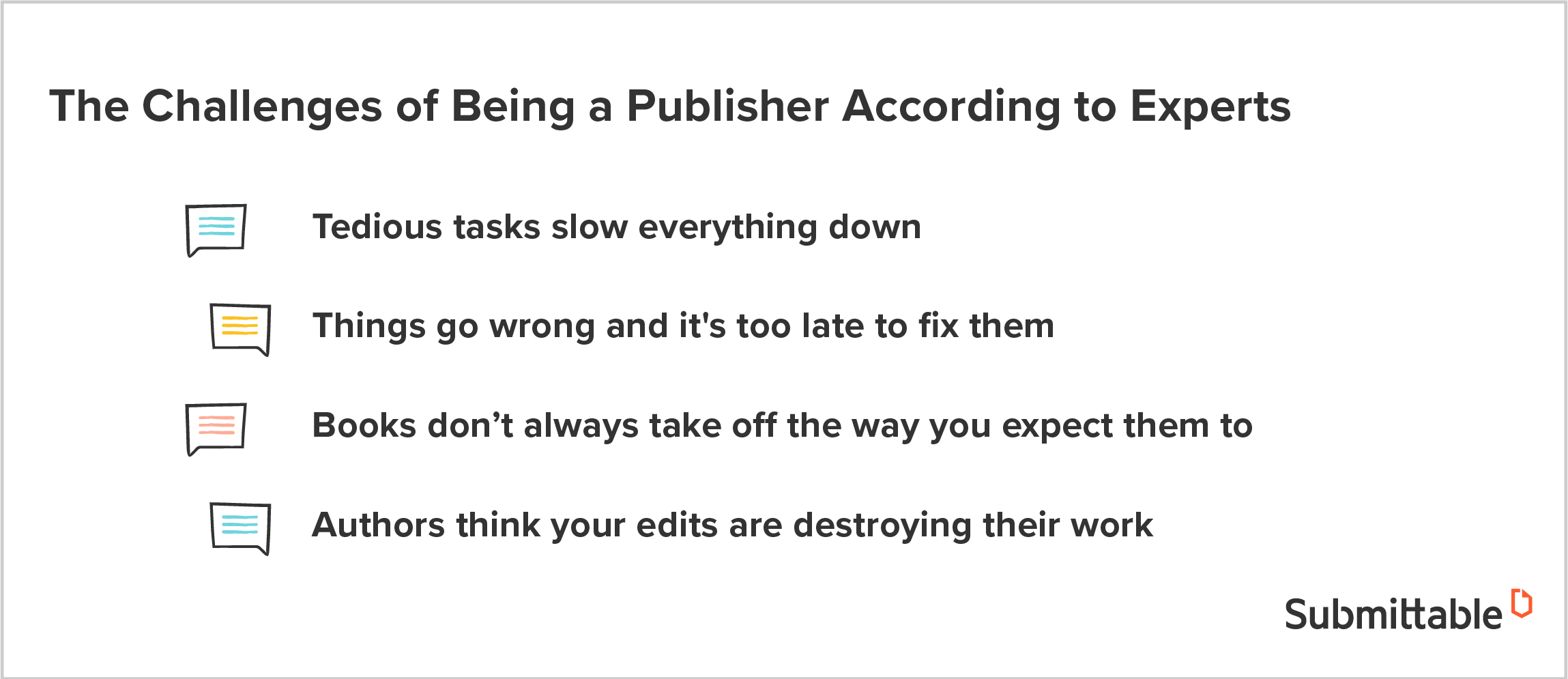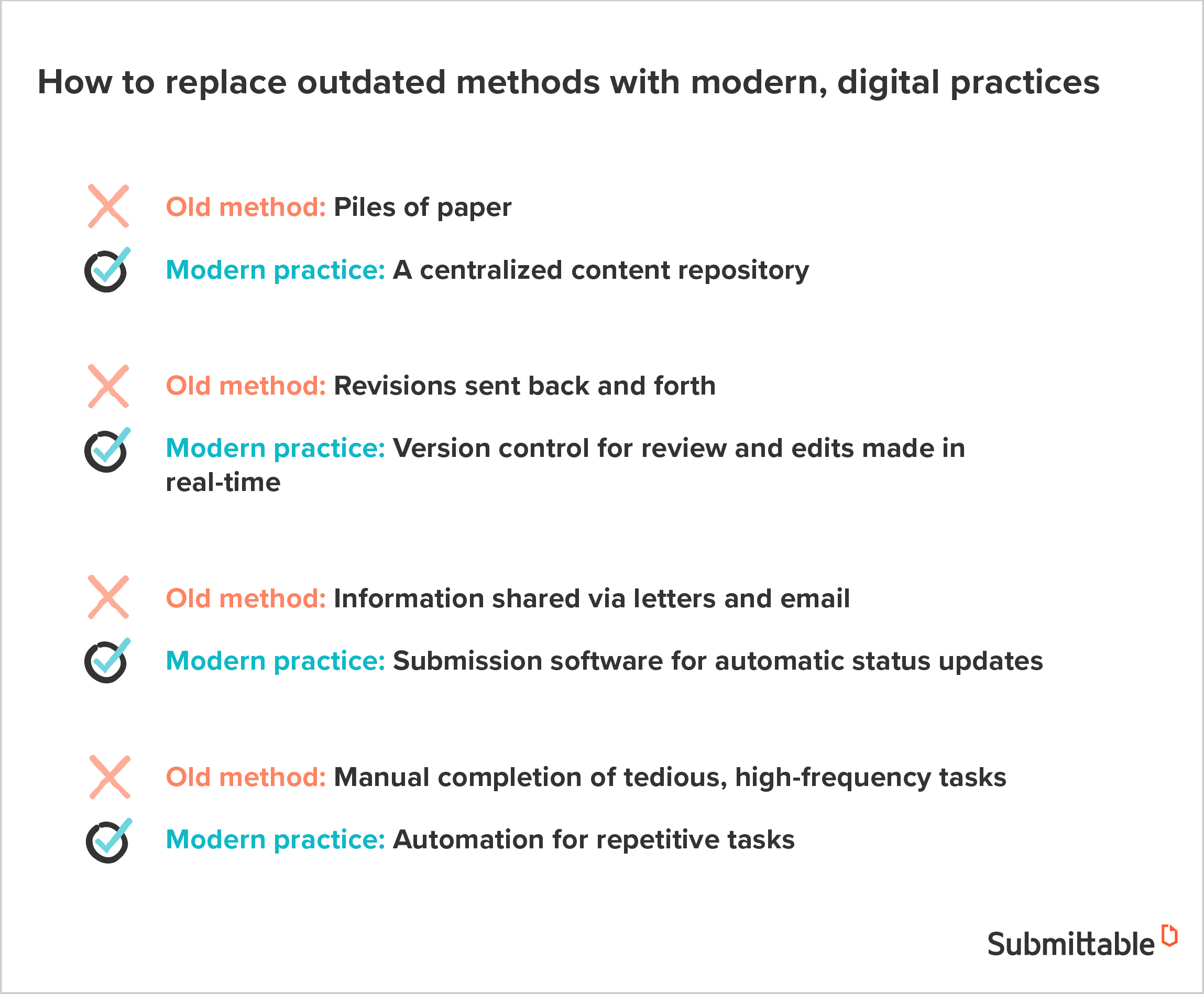For an editorial assistant, every day is a new near-death experience.
Well, for self-proclaimed Gen-Xer Meghan Daum, anyway.
In Daum’s collection of essays, My Misspent Youth, the talented writer gathers some of the stereotypes and myths about what it’s like to work in publishing. Then, Daum gets a hammer and smashes them to smithereens.
The title for one of Daum’s essays, “Publishing and Other Near-Death Experiences” could be a head-scratcher for the average person but if you work in publishing, you might have read that with a nod and disgruntled “hear hear”.
Well, fear not. You’re definitely not alone.
Modern publishers have been through a lot in recent years.
The last decade involved huge changes—book publishers saw a massive downsizing after the 2008 financial crisis and the rise of e-books.
For magazine publishers, the shuttering of many magazines amidst rapidly changing consumer demands was another adjustment.
Keeping up hasn’t been easy.
There’s no doubt about it— some parts of the publishing industry have evolved beyond traditional practices. But for the most part, “that’s just the way we do things” processes still rule the workflow cycle.
Even today, publishers, designers, editors and everyone else in the industry are spending too much time on outdated processes.
Thanks to popular TV shows (and movies so old that the characters are allowed to smoke inside), most people have a somewhat outdated idea of what it’s really like to work in the publishing industry.
A glamorous affair of fancy book launches, free stuff, and Mad Man-Esque late nights spent sipping whiskey over a manuscript. Right?
Not quite. We spoke to a few folks in the publishing industry about the profession and their take was a bit different. Here’s what they shared.

Tedious tasks slow everything down
“The publishing industry is stuck somewhere in the Jurassic era”.
Okay, we didn’t actually speak to Vantile Whitfield (obviously) but the sentiment still stands. It’s no secret that the publishing industry still relies heavily on outdated, administrative tasks.
For publishing manager Tenesha L. Curtis at Volo Press Books, the mountain of fiddly details that need ironing out at the last minute is what drains her energy. Back and forth revisions and chasing down edit requests are a constant. Plus, design details like typesetting and images often need quick adjustments.
“The publishing process can be tedious,” Curtis tells us. “An image uploads upside down for some reason, or a drop cap finds a way to wiggle slightly out of place after saving a project.” These common problems are accompanied by a string of other high-frequency, cumbersome little tasks that can occupy a full day.
Sending back and forth files, formatting documents, and following up on communications can take up hours of work for publishers.
When it comes to staying on top of a seemingly never-ending list of tasks, Curtis says it all comes down to the help of technology. Digital advances make it possible to automate repetitive tasks and over time, provide a huge time-savings.
Publishing might be an old industry but it could stand to catch up with technology. Manual status updates and countless versions of the same documents waste too much time and eat into resources that could be better spent sourcing great talent.
So what’s a publisher to do?
Although digital technology has changed the way industries are functioning, publishing is one area that (for the most part) still holds fast to traditional practices.
Unfortunately, sticking to manual processes throughout the publishing cycle can lead to inefficiencies and wasted time. You can increase speed with automated workflows and a centralized content repository that publishing team members can follow from beginning to end.
Things go wrong and it’s too late to fix them
“If you do not tolerate a certain level of anxiety over a considerable length of time (say, an entire career), then you are probably not constituted to be an editor.”That’s how Gerald Gross described the publishing process in Editors on Editing.
Among the warm, fuzzy feelings after a book has finally been published, there is endless stress over things that can go wrong during the process. While Gerald Gross’s observation might sound dramatic, for publisher and CEO of Write Publish Sell, Alexa Bigwarfe, it’s the worst part of the job.
No one likes not knowing what to do. For Bigwarfe and other publishers, the most extreme hair-pulling moments come when you realize something’s gone wrong but you’re too late in the process to fix it. Book dimensions get mixed up, a typo gets missed or a formatting detail gets miscommunicated. “You discover that you don’t know what you don’t know and that’s not a great feeling”, she says.
Vid Lamonte Buggs Jr, philanthropist and founder of 4 Unique Publishing, agrees—miscommunications are common within the publishing process and can lead to frustrated (read: furious) writers. Buggs Jr tells us about a time when communication between the publishers and the writers got lost and led to a book being published in the wrong size.
While the issue was sorted out in the end, instances like this can result in a damaged reputation for the publisher and very unhappy authors.
So what’s a publisher to do?
It’s time to knuckle down on swift communication.
Poor communication is common in the publishing world. In a survey of around 800 writers, 75% of authors reported that they have never been asked for feedback from their publisher.
28% of authors felt communication with their publisher was inconsistent during and after the book came out.
Now that’s not to say publishers are to blame—but it is difficult to keep up if agencies are still using old-fashioned methods for maintaining communication with such a large amount of contacts.
Modern publishers are moving towards digitized communication systems and all-in-one platforms to ease the headache of email and review notes. If you’re manually providing status updates in bulk, you’re wasting time. With digitized platforms, your writers will be clued in and you won’t be drowning in emails.

Books don’t always take off the way they’re expected to
No one can judge and predict the success of a book better than a publisher can.
But in our fast-paced society where new trends are constantly kicking old ones to the curb, a publisher can get it wrong sometimes. Bigwarfe tells us about dealing with expectations and disappointment when a publication doesn’t take off.
“There are so many books that take years to do what we wanted them to do,” Bigwarfe shares. Lots of excellent books never go viral and the reason for this isn’t always clear.
Does a trend change? Maybe the writer didn’t make enough noise about the book online. No one seems to be quite sure—Bigwarfe isn’t the only one.
Keith E. Bergstrom, President at Prestwick House, focuses on educational publishing and agrees that the worst part of the job is misjudging the success of a book. “It’s hard when you dedicate months of your life to a project, only to see it never take off”.
From structural edits and copywriting to design, last-minute corrections, and promotion, surely there’s a method to the madness? Maybe not. According to Bergstrom, “there are no certainties when it comes to releasing a new book—and sometimes a product you really believe in and really love just never happens the way you thought it would”.
Authors think your edits are destroying their work
Writing a book takes months, years even. First drafts, second drafts, deleted files, late nights, copious amounts of coffee and only writers know what else.
Then the big, bad editing wolf comes along and wants to rearrange, restructure, chop it all up, and put it back together again.
For publishers like L. Curtis, the process gets slowed down when writers either try to avoid the editing process or ignore it completely.
Publishing agencies pair writers with editors who know exactly what they’re doing and who share the same goal of wanting the book to be successful. “I understand the book is their ‘baby’ and it can hurt to see portions added to, rearranged, or (gasp!) removed completely,” Curtis explains.
“As a writer, let the editors do their job without getting defensive or outright ignoring or reversing their adjustments. It’s expensive and time-consuming.”
In one case, after Curtis had suggested revisions on a book, the author decided to self-publish it as it was, complete with grammatical errors, spelling mistakes, and all.
“[After buying a copy] I found that not a single change I recommended had been made. In nearly a year, this book had less than 10 reviews… [and these] appear to be from family and friends. I’m not saying that hiring an editor would have made the book a bestseller but had the author trusted me or another literary professional, I’m sure the author could have made a much larger, more positive impact on their audience and genre.”
Bergstrom agrees and says the process would be made a lot easier if writers understood that publishing is a team game, not an individual effort. “Every change made, every recommendation, and every disagreement is there to serve the work… we’re all trying to get the best product out that will make thousands of people happy”.
Getting things in order with technology
Publishers win when their work is released sooner, to the biggest possible audience, and when it has a long shelf life.
Slow, manual, and repetitive tasks make this outcome difficult to achieve.
In the midst of editing, design, and promotion, the publishing industry has tended to stay loyal to traditional methods that are increasingly ineffective.
But publishers are now competing with the availability of free content. Modern publishers who want to meet the changing needs of consumers should consider getting on board with the digital revolution or risk falling behind.
The good news is that while the spike in technology and easily-accessible web content, it has also provided the means to address these new ends.
An all-in-one platform can help get your content to a bigger audience, faster. With Submittable, every step of your workflow lives in one place. That means you won’t need to hunt down misplaced files or scour through lost communication to double-check what those book dimensions were supposed to be.
From the submission stage to publication, you can review, comment, and collaborate with everyone involved in one secure location. No more emails, downloads, or attachments in unsupportable formats.
Moving to a digitized space is how many modern publishers are saying goodbye to old-school methods. It’s time to step away from outdated processes and embrace digital workflows to take your work to the next level.
